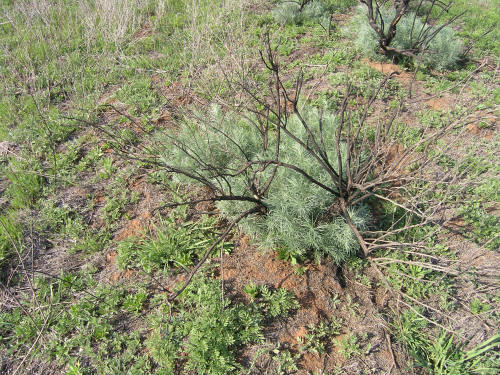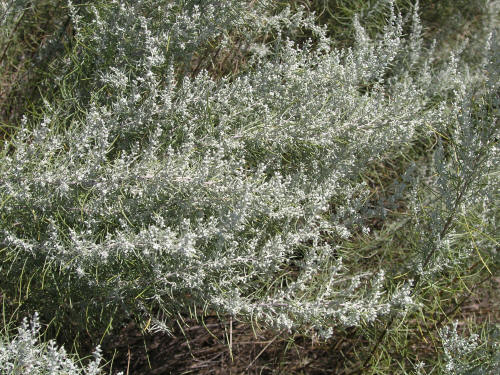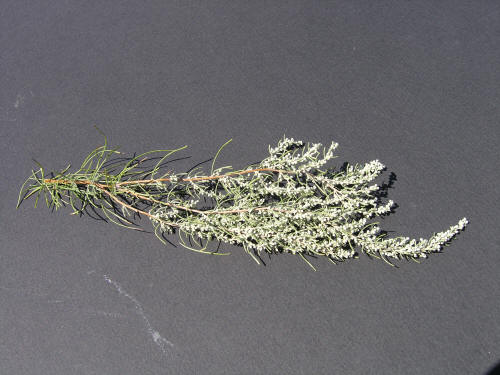Sand Sagebrush
Sand Sagebrush
Artemisia filifolia Torr.
Asteraceae (Sunflower Family)

▲ new growth from burned plant
▲ ▼ early summer growth
▲ ▼ early summer growth
▲ ▼ rangeland with many sand sagebrush
▲ ▼ flowering plants
▲ ▼ flowering plants


▲ flowering stem

▲ leaf
Artemisia filifolia Torr., Sand Sagebrush: (Bayer Code: ARTFI; US Code ARFI3)
- Native, clump-forming perennial, semi-woody plant growing 1-4 feet tall
- Leaves are gray-green to whitish due to presence of many tiny white hairs
- Lower stem leaves have 3 linear lobes; upper-stem leaves are unlobed and linear with a sage-like or medicinal odor if bruised
- Produces deep tap roots, plus fibrous roots near surface in higher moisture environments
- Inflorescences are tiny, ragweed-like, in axils of leaves on upper stems; can be a source of allergenic pollen
- Found in dry sites on native prairies and rangeland; more common in southwestern Midwest
- Tends to increase in overgrazed areas due to low palatability
- Characteristics to allow distinguishing from similar native species:
- Silver sagebrush (A. cana) has slightly wider, generally unlobed or shallowly lobed leaves throughout plant and is more common further north or at higher elevations
- Big sagebrush (A. tridentata) has slightly wider leaves with three short teeth at their leaftips
- Fringed sagebrush (A. frigida) does not produce persistent woody stems as do the other sagebrush mentioned, and its leaves are smaller (less than 1 inch diameter) and very much divided
- Louisiana wormwood (A. ludoviciana) is more common in the central Midwest and has linear lanceolate leaves that are unlobed or with a few shallow but wide (not linear) lobes
Native sagebrush/wormwood (Artemisia) species can provide valuable foot and habitat for many wildlife species, and so should not always be considered a weed in the sense that they should be controlled or eradicated.
Proper range management often allows for native species to continue as well as provide adequate grazing for domestic animals.
(Updated January 19, 2019)